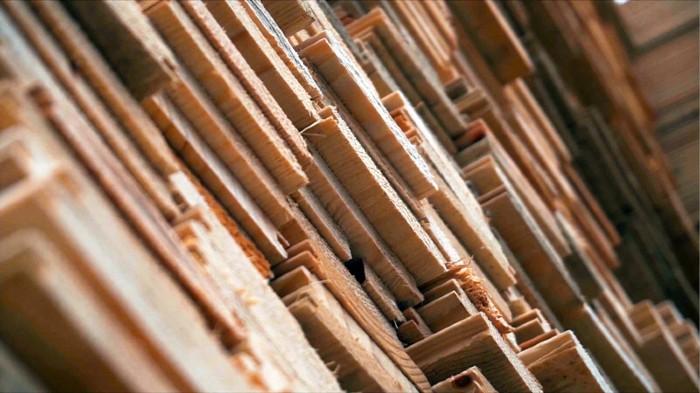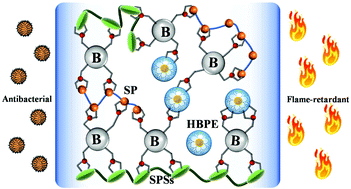Borate chemistry inspired by cell walls converts soy protein into high-strength, antibacterial, flame-retardant adhesive
 Chemists have borrowed a strategy from plant cell walls to produce a high-strength wood adhesive. An element that props up plants’ cell walls can turn soya protein into a strong and eco-friendly glue. The adhesives commonly used to bond wood into plywood and particleboard come from petroleum. But the earliest wood glues were made from proteins, such as soya flour. To make a comeback, soya adhesives must be made strong enough to meet building standards. Jianzhang Li and his colleagues at Beijing Forestry University brought in boron, an element that provides essential support in plants’ cell walls. The researchers stirred soya protein into water, then added a pinch of borate salt and a dash of a large, branched molecule. The borate ions formed weak links with the hydrogen atoms on the branched molecules and those on soya protein’s long-chained molecules, linking them into a loose 3D mesh. The authors used the soya-based adhesive to glue together sheets of veneer into plywood. When this plywood was pressed and heated, the borates’ weak bonds transformed into strong bonds, producing the same network structure found in plant cell walls. The boron-containing adhesive was more than three times stronger than plain soya protein.
Chemists have borrowed a strategy from plant cell walls to produce a high-strength wood adhesive. An element that props up plants’ cell walls can turn soya protein into a strong and eco-friendly glue. The adhesives commonly used to bond wood into plywood and particleboard come from petroleum. But the earliest wood glues were made from proteins, such as soya flour. To make a comeback, soya adhesives must be made strong enough to meet building standards. Jianzhang Li and his colleagues at Beijing Forestry University brought in boron, an element that provides essential support in plants’ cell walls. The researchers stirred soya protein into water, then added a pinch of borate salt and a dash of a large, branched molecule. The borate ions formed weak links with the hydrogen atoms on the branched molecules and those on soya protein’s long-chained molecules, linking them into a loose 3D mesh. The authors used the soya-based adhesive to glue together sheets of veneer into plywood. When this plywood was pressed and heated, the borates’ weak bonds transformed into strong bonds, producing the same network structure found in plant cell walls. The boron-containing adhesive was more than three times stronger than plain soya protein.
The paper titled “Borate chemistry inspired by cell walls converts soy protein into high-strength, antibacterial, flame-retardant adhesive” has been published in Green Chemistry of the Royal Society of Chemistry. The researchers are from China (Beijing Forestry University’s Advanced Innovation Center for Tree Breeding by Molecular Design, Beijing Key Laboratory of Wood Science and Engineering & MOE Key Laboratory of Wooden Material Science and Application) and the United States (Department of Mechanical and Energy Engineering, University of North Texas, Denton, TX, USA).
The abstract of the paper is reproduced below:
Urea formaldehyde, phenolic, and melamine formaldehyde resins are currently the most common wood adhesives. However, these modern wood adhesives have toxicity problems and most of the raw materials come from non-renewable resources. Ideally, future alternative adhesives will be prepared from non-toxic, inexpensive, and renewable natural materials. We found that borate chemistry can crosslink soy protein (SP) and soy polysaccharides (SPSs) to produce a strong adhesive, which is the core of the stable structure in higher plants. Hyperbranched polyester (HBPE) was added to the adhesive as a toughening agent. The resulting crosslinked protein adhesive bound wood with high strength and in some cases its force exceeded the force that the wood itself could withstand. In addition, the borate crosslinked protein adhesive displayed antimicrobial and flame-retardant properties. Simple borate chemistry can provide a way to produce low-cost, renewable, and high-performance materials.
Source: Nature, Green Chem. (2020)




